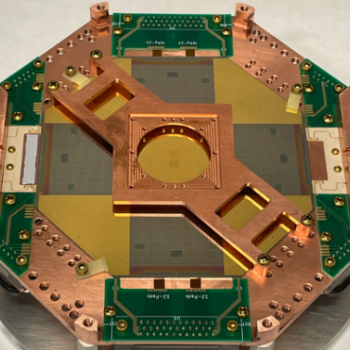New X-ray detectors to provide unprecedented vision of the invisible universe
Very detailed information is now available from ultraviolet, optical, and submillimeter observations of the stellar, dust, and cold gas content of galaxies, and yet there is a dearth of understanding about the mechanisms that formed these galaxies. To truly understand how galaxies form, X-ray observations from high energy resolution imaging spectrometers are needed to see the cores of the galaxies themselves.
New large-area, high-angular-resolution, imaging X-ray spectrometers will expose the essential drivers of galaxy evolution, which leave imprints in the warm-to-hot plasma that cosmologists believe exists in the spaces between galaxies. These intergalactic spaces contain 40–50% of the 'normal matter' in the universe and extend well beyond the currently visible size of galaxies.
A class of X-ray spectrometers called microcalorimeters operate at a very low temperature—a few tens of milli-Kelvin above absolute zero. Over the past five years, the X-ray Microcalorimeter Group at NASA’s Goddard Space Flight Center (GSFC), the Advanced Imager Technology Group at Massachusetts Institute of Technology’s Lincoln Laboratory (MIT/LL), and the Quantum Sensors Group at the National Institute of Standards and Technology (NIST) in Boulder, Colorado have been collaborating on the development of an ambitious new X-ray camera with unprecedented imaging and spectroscopic capabilities.
